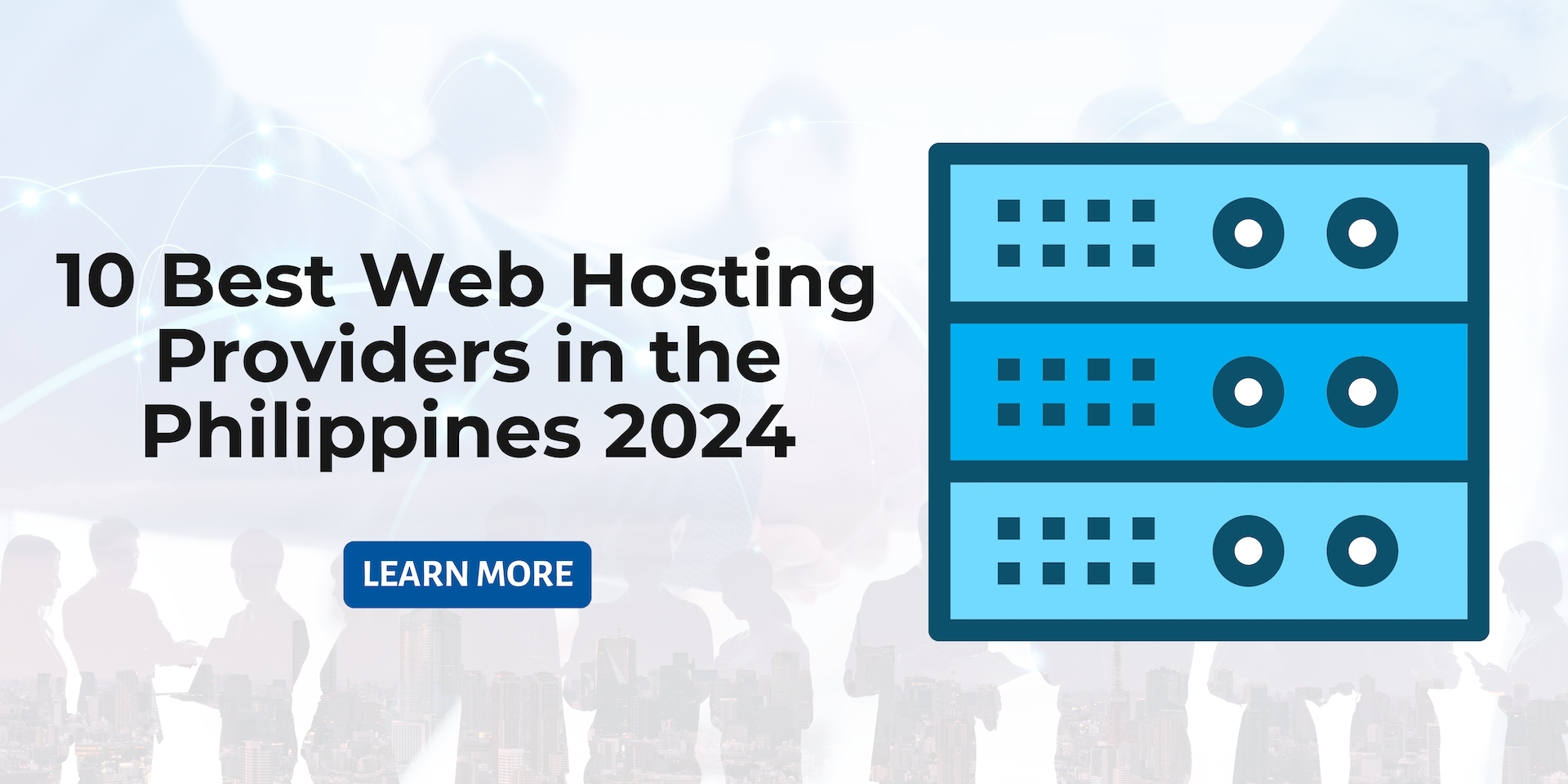Your Checklist for Buying a Domain Name
Welcome to the ultimate guide on how to buy a domain name for your website! Getting your own domain is a key first step in creating an online presence. It lets you brand yourself and have a one-of-a-kind web address.
Step in domain name registration and creating an online presence.
Between evaluating domain extensions, availability, costs, registrars and more, the process can quickly become complicated. This article will provide invaluable background context and simplify the domain buying process for newcomers.
You'll learn domain budget tips, research tactics, and final registration steps. This will help you pick and purchase the right domain for your brand and goals.
Our checklist has tips for buying domains properly. It helps you avoid mistakes novices make. Following our advice will lead to long-lasting website success. Whether buying your first or fifth domain, use our step-by-step process to develop an informed purchasing strategy.
Check out these checklists for streamlined domain ownership and accelerated growth when establishing or expanding your online presence.
Determine the Main Purpose of Your Website
Start with the primary goal for having an online presence. Business promotion? Content sharing? Networking? Authority building? Defining this purpose sets direction for subsequent development plans and strategic choices.
Define your website's primary goal, whether it's to attract potential customers, showcase products or services, or share information.
It's crucial not to gloss over this foundational planning stage. Having clear goals for your online presence will guide choices like your domain name, design, content, and tech. These goals include why you're online and what you want to achieve.
Websites meant for sales have commercial intent. Websites meant for sharing hobbies or blogging don't. So sales websites will pick domains, hosting plans, page layouts, and SEO strategies focused on selling. Blogs will pick differently since they don't sell.
As you think about why you want to build a website, these are the frequently asked questions:
Who is my target audience?
What problems can I help solve for them?
What do I want visitors to do on my site?
What information is most useful to share?
How will I make money from the site, if I want to monetize it?
Have a clear "why" for the website. Then align aspects of development to facilitate that purpose. Craft visitor experiences that speak to their needs and interests directly. Refer often back to original goals so choices achieve long-term objectives.
Set Your Budget Before Buying a Domain
Buying a domain name requires planning your budget first. You need money not only to pay the initial registration fee. You also need funds to renew the domain name year after year. If you don't renew, you risk losing ownership of the domain.
Additionally, factors like choosing more expensive domain extensions or optional privacy services can increase costs.
Without financially planning ahead, beginners often underestimate expenses which leads to hasty, misaligned purchases. So what should you budget when buying a domain name as a first-timer?
Standard .com domains usually cost $8 to $15 for the first year's registration fee. After the first year, renewing the .com domain typically costs $8 to $20 per year.
However, premium or aftermarket domains can range anywhere from $50 up to the thousands based on desirability.
New domain extensions like .blog or .guru also usually start around $20/year while more niche options like .pizza and .tech may be $50-plus annually.
When registering a domain, you should also consider a few additional factors. Many registrars offer privacy protection services that hide your contact information in WHOIS domain lookups. These carry recurring fees.
If you try to register a domain name that is about to expire, there may be other interested buyers. Expiring domains that are popular or valuable often go to auction to sell them to the highest bidder. Expect to pay extra fees if you want features to bid in such domain name auctions.
Some registrars bundle other products like email accounts or website builders with domain purchases. You may want to account for these extra services and fees when selecting a registrar and registering your domain.
All said, a starter budget of around $80 can nab you an affordable, high-potential .com domain with ID protection for the first 2 years. On the higher end, $500 annually can secure a premium domain plus advanced features.
Remember to factor in renewal costs as well, not just the initial registration fees!
Choose cheaper top-level domains (TLDs) like .org instead of new, expensive TLDs. Take advantage of introductory promotions that registrars often offer.
Remember to enable auto-renewal to avoid forgetting to renew your domain and risking losing ownership.
Finally, find registrars that provide WHOIS privacy protection for free. WHOIS privacy hides your contact information from public view.
Research Domain Name Availability and Alternatives
Finding an available domain name that properly reflects your brand can be challenging, but thorough research is key. See if a domain registrar search platform shows your preferred name as already registered.
Also use
specialized domain tools to generate suggestions
incorporating relevant keywords, assessing availability and estimated value. The exact name matching your brand may not be available. Consider alternatives that communicate your brand's identity or incorporate your services.
While frustrating, domain squatting and conflicts happen - remain patient and creative in your search process to find the best fit.
If your first choice isn't available, stay positive and don't get discouraged. Brainstorm name variations that capture your essence or try different domain extensions like .company or .solutions.
Incorporating meaningful keywords can enhance visibility for your audience and convey your niche. Just ensure alternatives align with your branding so names don’t seem disjointed once launched.
Explore different possibilities - a domain conveying your offerings can resonate stronger than a vague brand-match.
Ultimately your domain should reflect your identity while working for your goals. Consider your messaging, persona and vision - how can a name encapsulate this?
Seek input from peers on alternatives to gauge perceptions. Research your audience’s keywords and trends to inspire ideas.
The process might be tough, but flexibility and aligning with your brand and audience will help you choose wisely.
Understand the Different Domain Extensions and Choose Wisely
Choosing a domain for your website is a big decision. One of the most important aspects is the TLD extension, which affects your brand identity, global reach, and budget. It's crucial to match the extension to your objectives and audience. Understanding the differences between popular options like .com and specialized ones like .blog or .store is key in choosing the right type of domain for your website.
The most widely recognized domain extensions are .com, .net, and .org. These generic extensions reach the broadest audience.
Country-specific extensions like .us (United States), .ca (Canada), or .nz (New Zealand) can attract visitors from those countries or increase credibility within those regions.
Newer niche gTLDs aim to be industry-, topic- or brand-specific - so an environmental non-profit may consider .earth or e-commerce furniture store could leverage .furniture.
When weighing your TLD options, assess availability, memorability, SEO-friendly potential, security, and budget-friendliness. An expensive, esoteric domain could hinder growth prospects. Leverage tools like Moz Keyword Explorer to compare domain extension combinations with valuable search traffic and low competition.
If targeting multiple demographics, secure the .com alongside ccTLDs or localized domains to hedge your bets abroad.
Ideally, align the TLD tightly with site topic and content focus first, then tweak based on practical limitations. If budget constraints rule out the perfect .com, pivot to .org or niche TLD alternatives as Plan B.
Remember, starting with a few domain extensions may seem limiting, but you can always add more to help your brand grow. By choosing a clear and relevant domain from the start, you make sure your website has a great chance to succeed worldwide.
The world of domain extensions might look complicated at first. However, understanding the purpose, expansion possibilities, and different top-level domains (TLDs) equips you to make a wise choice.
Pick a Domain Name that Matches Your Brand Identity
A domain name is a foundational piece of establishing your brand identity online. Your domain is more than just a URL; it symbolizes what your business or project is all about. It should quickly communicate your main focus and values to those who visit.
When picked strategically, it becomes an integral part of your brand recognition, facilitating meaningful connections with your audience.
Start by clarifying the central facets of your brand identity and mission. Capture any keywords, personalities, or tones representative of your vision. Use this as inspiration to think of domain names with your team. Aim for names that are catchy and easy to remember, and that reflect what you're all about.
Aim for names that are short, easy to say and spell, and communicate your niche clearly to stand out.
Additionally, consider incorporating your brand name itself, or a variation, into potential domain names for consistency. This boosts recognition across marketing channels by linking your visual branding to the domain visitors see.
If your project is "All Naturals," consider domains like AllNaturalsGoods.com or AllNaturalsMarket.com. These names include your project's identity.
Equally important is assessing competitors’ domains to avoid anything too similar, while still indicating your industry. Distinguishing names reflect your unique value while signaling relevance to users. You might also investigate keyword optimization tools to inspire domain ideas resonating with your audience and enhancing findability.
Choosing a domain name that mirrors your brand identity enhances visibility, uniqueness, and interaction with visitors. Let it become a natural extension of your identity.
Consider SEO & Memorability When Selecting a Name
A strategic domain name selection should optimize both search engine visibility and memorability for your audience. Attract more organic visitors and improve engagement and brand memory by using simple SEO principles and understanding catchy names.
Your domain name serves as a powerful marketing tool, helping you attract visitors and promote your brand online.
When brainstorming, consider incorporating relevant keywords your audience uses, like “organic” or “sustainable” for an eco-friendly shop. This seeds SEO potential. However, avoid cramming multiple terms with hyphens like “sustainable-organic-web-goods” as this appears spammy to visitors. Additionally, use words over obscure numbers and letters which can confuse users.
Ideally, choose a short domain name that clearly shows what you offer using simple words. For example, a brand like “PetPerfect” sticks in our minds with its simple adjective+noun name just 8 letters long.
Easy to spell and say names enable recall and word-of-mouth promotion from happy customers.
Analyze what else is out there but aim for a unique spot in users’ minds through distinct keywords or branding. For example, a brand named “SoothingSoulsYoga” differentiates from other yoga sites with its emotive descriptor while still signaling relevance. Names directly conveying your niche both reinforce your identity to visitors and build real-world engagement.
Start strong by picking a domain that's easy to find and remember, based on thorough research and basic principles.
Thoroughly Vet Domain Registrars Before Purchasing
Thoroughly vetting a domain name registrar is crucial to ensure a smooth process for registering your domain.
Choosing a domain registrar is a critical step in establishing your online presence. Choosing a good registrar is crucial. Look for one that provides the features you need, reliable support, and strong security. This will ensure a smooth process for registering your domain.
Here are some insights and strategies to help you make an informed decision.
Key Factors to Consider
When vetting domain registrars, consider whether they offer suitable web hosting plans that align with your website's requirements.
Consider the following factors:
Pricing:Ensure the registrar offers competitive pricing for domain registration, renewal, and transfer. Be wary of registrars offering extremely low prices, as they may have hidden fees.
Customer Support Quality:Choose registrars known for great customer service. They should offer various ways to get in touch, like email, phone, and live chat. Check customer reviews and ratings to gauge their responsiveness and helpfulness.
Domain Management Features:The registrar should offer a simple interface for domain management. This includes making DNS changes, transferring domains, and renewing them.
Renewal Policies:Understand the registrar’s domain renewal process, including the renewal cost and grace period. Some registrars may offer automatic renewal, which can prevent accidental domain expiration.
Additional Services:Many registrars offer additional services like free domain, web hosting, email hosting, SSL certificates, and privacy protection. While these are not necessary for domain registration, they can be beneficial depending on your needs.
Many registrars offer domain privacy protection services that hide your contact information in WHOIS domain lookups.
Risks and Pitfalls
Be aware of potential risks and pitfalls when selecting a domain registrar:
Hidden Fees:Some registrars may have hidden fees for services like domain transfer or renewal. Always read the fine print before making a purchase.
Poor Customer Service:Check customer reviews and ratings to avoid registrars with a history of poor customer service.
Unreliable Uptime Guarantees:Ensure the registrar provides reliable DNS servers to avoid potential downtime.
Verifying Security
Security is paramount when it comes to domain registration. Here’s how to verify the security of a domain registrar:
Data Protection and Encryption:Make sure the registrar follows data protection standards and uses secure (HTTPS) connections for transactions.
Security Measures:Ensure your domain's security with features like two-factor authentication (2FA), DNSSEC support, and domain locking.
Before buying a domain, it's vital to thoroughly check the registrar to avoid future problems. This means looking into their pricing, customer support, domain management options, renewal policies, and any extra services they provide.
Verifying this ensures the registrar you choose provides competitive pricing, clear support, user-friendly domain management, fair renewal policies, and helpful additional services.
This can help you avoid surprise expenses, bad service, complicated domain management, unexpected renewal terms, and missing features.
Plus, it aids in steering clear of registrars with hidden fees, bad customer service, or shaky uptime guarantees. These are red flags that could lead to frustrating experiences and potential disruptions to your website’s operation.
Point Your Domain to A Reliable Web Host
Connecting your domain name to a dependable web hosting service is a crucial step in establishing your online presence. Z.com is a reliable web hosting provider, offering high server uptime guarantees, ample bandwidth and storage, outstanding technical support, and customizable hosting solutions.
Step-by-Step Instructions
Here are the steps to point your domain name to Z.com’s hosting servers:
Log in to your domain registrar account:This is where you purchased your domain name.
Navigate to the DNS settings:Look for an area labeled ‘DNS Settings’, ‘Name Server Management’, or something similar.
Update the DNS records:Replace the existing name servers with Z.com’s name servers. Z.com typically provides this information when you sign up for their hosting service.
Save your changes:It may take up to 48 hours for the changes to propagate across the internet.
Why Choose Z.com?
Z.com is a reliable web host for several reasons:
High Server Uptime Guarantees:Z.com guarantees high server uptime, ensuring your website is always accessible to visitors.
Ample Bandwidth and Storage:Z.com offers generous bandwidth and storage options, accommodating websites of all sizes.
Top-Notch Technical Support:Z.com provides excellent technical support, helping you resolve any issues quickly.
Scalable Hosting Options:As your website grows, Z.com’s hosting options can scale to meet your needs.
Optimizing Your Hosting Setup
To optimize your hosting setup with Z.com for performance and security, consider the following:
Configure DNS Settings:Properly configuring your DNS settings can improve your website’s loading speed and reliability.
Implement SSL Certificates:SSL certificates encrypt data between your website and its visitors, improving security and boosting SEO rankings.
Implement Security Measures:Z.com provides security measures like malware scanning and removal to safeguard your website from cyber threats.
Integrating your domain name with Z.com’s hosting service can ensure the optimal performance and security of your website. You can make informed decisions and choose a trusted web host that meets your needs.
Complete Domain Registration & Set Up Email
After purchasing your domain name, it's crucial to complete the registration process and set up professional email addresses. Rushing through registration or neglecting email setup can lead to various problems that harm your online presence.
It is vital to take the time to carefully complete every step of the domain registration process.
Enter accurate contact details, choose domain privacy options carefully, and activate multi-factor authentication to secure your domain accounts. Incorrect registration completion may expose your data or result in losing domain control due to mishandling billing or renewals.
Additionally, you must set up reliable, professional email addresses associated with your new domain. Businesses require efficient email systems because consumers predominantly prefer email for communication, which minimizes the chances of overlooking messages or opportunities.
Using your domain email like contact@yourcompany.com also builds credibility and trust much more than generic addresses like Gmail.
However, establishing domain email takes more than just creating accounts. It requires selecting a reputable email hosting provider, correctly configuring DNS records, installing security protections like SSL certificates, and more. Improperly set up domain email can struggle with deliverability issues, security vulnerabilities, and general unreliability.
Incomplete domain registration or email setup can ruin your efforts in picking the perfect domain name.
Protect your investment by meticulously registering your domain and then establishing hosted email addresses. Follow best practices around security, backups, and account management. Your completed domain and email presence will become the customer-facing foundation for all your online business activities.
Leverage DNS Settings for Customization
The Domain Name System (DNS) works like a phonebook. It pairs domain names with the right IP addresses. So internet traffic goes to the correct place.
Beyond this core function, tweaking certain DNS records gives you further ability to customize how your domain name operates.
For example, you can set up sub-domains like support.yourdomain.com or login.yourdomain.com to partition areas of your site for better organization. Sub-domains function essentially like separate sites through the same main domain.
Using DNS CNAME (alias) records also allows you to point multiple domain names to the same site. This helps consolidate multiple domains to a single location.
The Domain Name System (DNS) manages mail servers. It routes domain email to the right mail server.
You can adjust Mail Exchange (MX) records for your email host.
This proper mail routing is essential for establishing reliable email with your custom domain.
DNS settings even facilitate critical security features like enabling SSL encryption across your site by integrating with certificate authorities. Dynamic DNS options also allow frequently changing IP addresses to update DNS automatically each time IPs shift.
Purchasing an ideal domain name is a big first step. But learning to use DNS gives more options to adapt your online identity. Properly managing DNS unlock features like mail management, security encryption, site partitioning into sub-domains, domain name consolidation, and dynamic IP mapping. Treat DNS knowledge as an invaluable skillset to get the most out of your investment in a domain name.
Conclusion
Choosing a good domain is not just about the name—it's about setting the stage for success in the digital landscape.
Acquiring the perfect domain name to represent your brand is a foundational milestone when establishing an online presence. New domain owners should think strategically when choosing and managing their domains.
Think about matching domain names to your goals. Choose useful extensions. Optimize for search visibility. Simplify managing domain name servers. Protect your investment through account management.
Make specific branding, design, and content decisions to achieve the big-picture vision for your website. Start with the basics - define your central purpose and target audience. Your domain should encapsulate this identity and intent immediately to site visitors.
Budgeting adequately then allows you to acquire a domain matching this brand alignment rather than settling for suboptimal alternatives.
Leveraging availability checkers and recommendation tools further focuses your search, while considering memorability and SEO principles
during brainstorming fine-tunes selection.When choosing a TLD extension, you should consider the domain landscape. Popular options are .com or niche options like .store. You can also choose region-specific TLDs to target visitors in certain countries.
Vetting registrars thoroughly safeguards your domain ownership experience regarding uptime reliability, security measures, responsive support and intuitive control panels. Pointing this optimized domain to robust hosting facilitates technical performance at scale. Establishing branded email accounts and implementing DNS customizations like sub-domains then completes your domain’s foundational capabilities.
To thrive long-term in domain purchasing, view it as a multi-faceted process needing careful planning and effort. Don't see it as a one-time transactional choice. Align to strategy, select for audience resonance and distinguish from competitors.
Streamline the technical integration process. Then carefully manage account security, renewals, and DNS flexibility. This will help extract full value from your investment as time passes. It will also amplify organic growth and engagement.
PROMO
FREE Web Hosting
for Your Website



